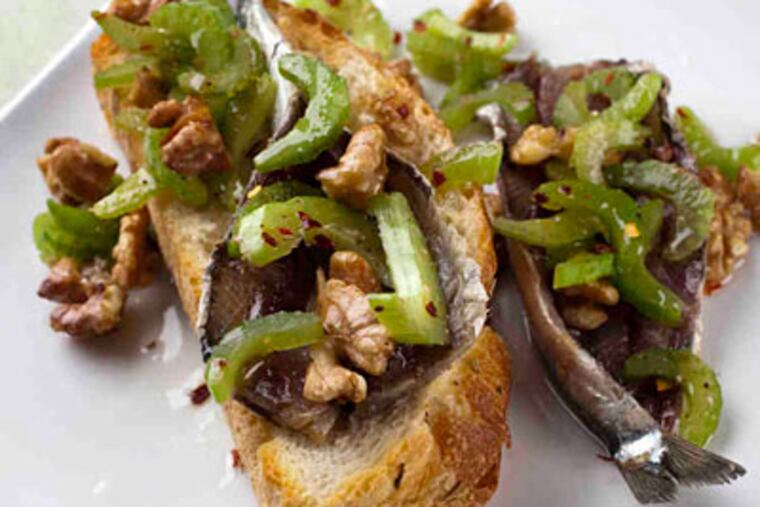
You want to eat more fish. Ironically for the conscientious consumer, that has become more difficult to do, thanks to a wave of confusing information. Modern seafood cookbooks must explain and enlighten as well as offer accessible recipes; some have risen to this challenge better than others.
Barton Seaver has hit the right notes with his first cookbook For Cod and Country (Sterling Epicure, $30; 175 recipes). For the Washington, D.C. chef, preparing seafood remains a personal enterprise. Only now, he has the simultaneous pulpits of bound volume, television (his recent In Search of Food series on cable's Ovation Network), and a Web series through National Geographic, where he is a fellow.
If you can look beyond the cheerleading - "You can save the world by eating an oyster, so get to it"; "Delicious is the new environmentalism" - you'll find that Seaver's primer and commentary on fish, shellfish, and aquaculture are intelligently argued. Eschewing certain cheffy, eco-correct modes of thought, Seaver embraces farm-raised and frozen fish. His recipes are unfussy, if a bit formulaic. The book itself is visually attractive, with design atmospherics done by Seaver's wife, Carrie Anne.
Most appealing is Seaver's easy way of imparting techniques, even when he's a bit of a scold: "People do too much stirring," he writes. He favors a hands-off, low-heat approach to oven cooking. He offers user-friendly takes on cold- and hot-smoking, grilling, and filleting.
Cod lays out much of what the chef has demonstrated during his restaurant service (Cafe Saint-Ex, Hook, Tackle Box, Blue Ridge) and public speaking engagements. He advocates brining for fish and gives a species-specific, exacting chart of times - although it would have been helpful to reinforce the practice with a mention in the recipes. Citrus is a favorite flavor agent; pepper is too strong, and he disavows the notion that it's an automatic partner for salt.
And because man does not live by fish alone, Seaver offers ways to prepare salsas, pestos, and side dishes, as well as seafood spice mixes, flavored oils and butters.
Flip-to-the-back-of-the-book types will be rewarded with his recipe for aromatic kitchen potpourri, to rid your house of seafood cooking smells.
It calls for seaweed.
Tilapia With Ginger Glaze
Makes 4 servings EndTextStartText
2 tablespoons regular or low-fat mayonnaise (do not use nonfat)
1 tablespoon low-sodium soy sauce
Freshly squeezed juice from 1 lemon (3 to 4 tablespoons)
1-inch piece peeled ginger root, finely grated
2 medium cloves garlic, finely grated
3 or 4 scallions, trimmed and cut crosswise into thin slices
4 5-ounce tilapia fillets
EndTextStartText
1. Position the top oven rack 4 to 6 inches from the broiling element; preheat the broiler. Line a baking sheet with aluminum foil (for easy cleanup).
2. Whisk together the mayonnaise, soy sauce, lemon juice, ginger, garlic, and scallions in a medium bowl.
3. Add the tilapia fillets; toss gently to coat. Place the fillets on the baking sheet, skin sides down, and spoon any remaining glaze over them. Broil for about 6 minutes, until the fish is just cooked through and the glaze is lightly browned. Serve immediately.
Per Serving: (using low-fat mayonnaise): 220 calories, 35 grams protein, 4 grams carbohydrates, 1 gram sugar, 6 grams fat, 95 milligrams cholesterol, 240 milligrams sodium, no dietary fiber.